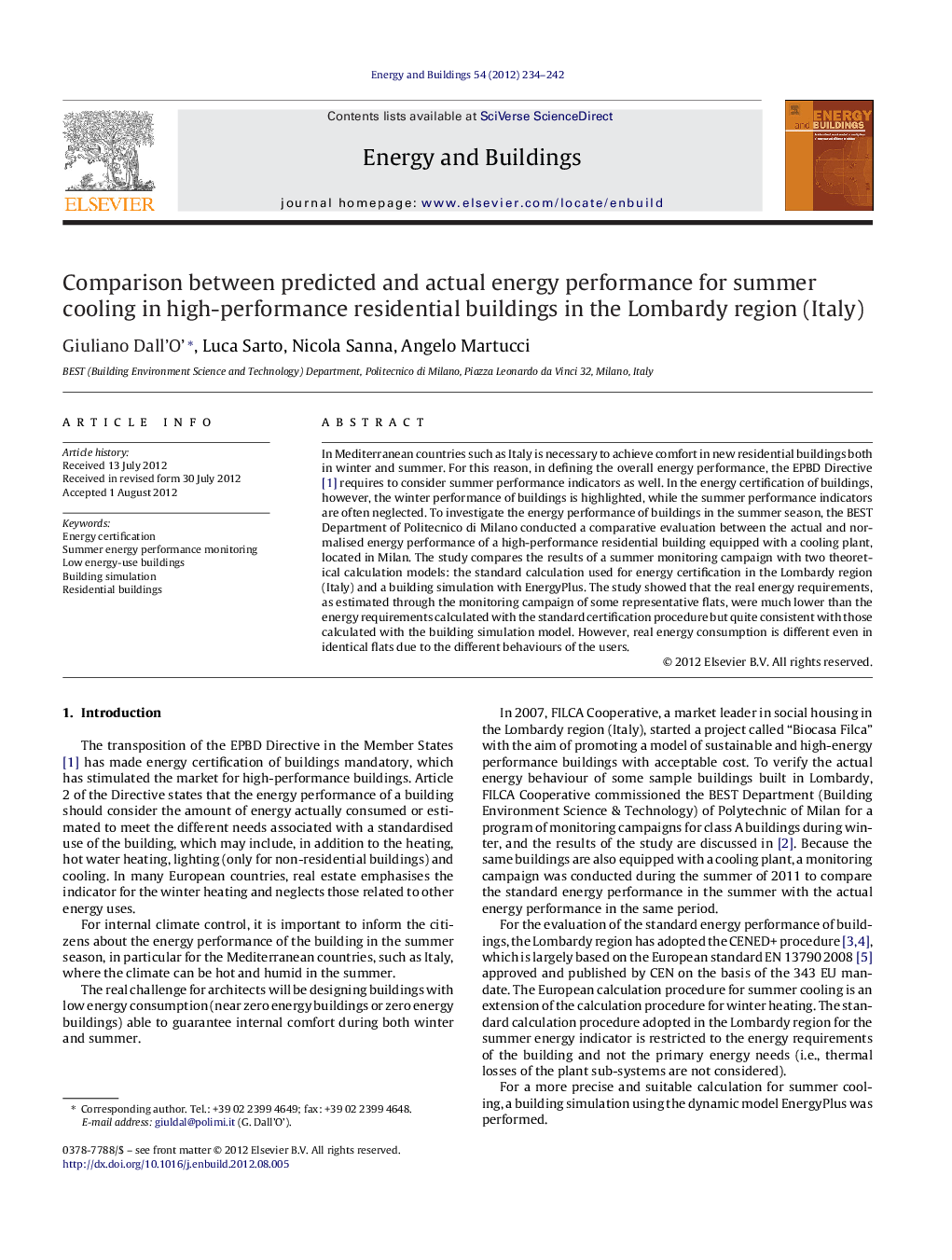| Article ID | Journal | Published Year | Pages | File Type |
|---|---|---|---|---|
| 263654 | Energy and Buildings | 2012 | 9 Pages |
In Mediterranean countries such as Italy is necessary to achieve comfort in new residential buildings both in winter and summer. For this reason, in defining the overall energy performance, the EPBD Directive [1] requires to consider summer performance indicators as well. In the energy certification of buildings, however, the winter performance of buildings is highlighted, while the summer performance indicators are often neglected. To investigate the energy performance of buildings in the summer season, the BEST Department of Politecnico di Milano conducted a comparative evaluation between the actual and normalised energy performance of a high-performance residential building equipped with a cooling plant, located in Milan. The study compares the results of a summer monitoring campaign with two theoretical calculation models: the standard calculation used for energy certification in the Lombardy region (Italy) and a building simulation with EnergyPlus. The study showed that the real energy requirements, as estimated through the monitoring campaign of some representative flats, were much lower than the energy requirements calculated with the standard certification procedure but quite consistent with those calculated with the building simulation model. However, real energy consumption is different even in identical flats due to the different behaviours of the users.
► Monitoring the energy performance of a low energy-use building in summer. ► The actual energy consumption for summer cooling depends on the end-user approach. ► Monitoring ensures quality control of high-performance buildings. ► For the predictions of summer energy consumption, dynamic models are more reliable than static ones.
